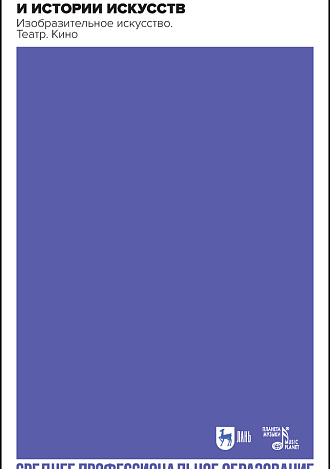Основы теории и истории искусств. Изобразительное искусство. Театр. Кино.
Уровень образования:
СПО
Дисциплины:
Вид издания
учебное пособие для СПО
Год
2024
Объем
456 с.
ISBN
978-5-507-49745-4
Переплет
Твердый
Формат
13*20 см
Издание
2-е изд., стер.
В учебном пособии под одной обложкой представлены теория и история разных искусств: изобразительного искусства, театра, кино. Искусства существуют не в замкнутом пространстве— они вписаны вопределенный социокультурный контекст и постоянно взаимодействуют друг с другом. Поэтому лишь взятые вместе, они становятся формой художественного самосознания человечества, той культурной связкой, благодаря которой осуществляется диалог эпох. В качестве основного принципа подачи материала избран примененный к художественному познанию принцип единства исторического и логического, благодаря которому развитие искусства последовательно прослеживается как хронологически, так и на примерах творчества наиболее значимых его представителей. Соответствует современным требованиям Федерального государственного образовательного стандарта среднего профессионального образования и профессиональным квалификационным требованиям. Адресовано студентам средних специальных учебных заведений.
The textbook comprises the theory and history of different arts: fine art, theatre and cinema. Arts do not exist in a closed space— they are integrated into a specific sociocultural context and always cooperate with one another. That is why, only taken together they become a form of humanity’s artistic self-consciousness, the cultural connection, thanks to that there is a dialogue of epochs. The principle of historical and logical unity, used for artistic study, was chosen as the main method of presentation in the book. Thanks to that principle, the development of art is consistently traced both chronologically and in the examples of the creative work of the most prominent representatives. Corresponds to the modern requirements of the Federal State Educational Standard of Secondary Vocational Education and professional qualification requirements. The textbook is intended for the students of colleges.


